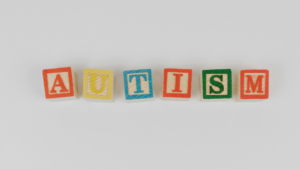Autism spectrum disorder (ASD) affects both boys and girls, but the way it manifests can differ significantly between genders. Traditionally, autism has been more commonly diagnosed in boys, leading to a greater understanding of how the condition presents in males. However, as awareness grows, it has become increasingly clear that girls with autism often exhibit different symptoms, which can sometimes lead to underdiagnosis or delayed diagnosis. Understanding these gender differences is crucial for ensuring that both boys and girls receive the support and interventions they need.
Why Autism is Diagnosed More Frequently in Boys
Autism is diagnosed in boys at a significantly higher rate than in girls, with estimates suggesting that boys are four times more likely to be diagnosed than girls. Several factors contribute to this disparity:
Diagnostic Criteria Based on Male Presentation
Historically, the criteria used to diagnose have been based on studies predominantly involving boys. As a result, the signs and symptoms that are more common in girls may not be as easily recognized by clinicians, parents, or educators.
Differences in Symptom Expression
Boys and girls with autism often display different symptoms, with boys more likely to exhibit behaviors that are readily identified as autistic. Girls may show subtler signs or may mask their difficulties, making them less noticeable.
Socialization Differences
Girls are often socialized differently than boys from a young age, which can affect how symptoms present. Girls might be more adept at mimicking social behaviors or compensating for their challenges in ways that boys may not, leading to their symptoms being overlooked.
How Autism Symptoms Differ in Boys vs. Girls
Social Interaction and Communication
Boys: Boys with autism often exhibit more obvious social challenges, such as difficulty initiating and maintaining conversations, lack of interest in peer interactions, and difficulty understanding social cues. These behaviors are typically easier to identify and may lead to an earlier diagnosis.
Girls: Girls with autism may have more subtle social difficulties. They might engage in social interactions but struggle with the nuances of relationships, such as understanding unspoken rules or maintaining friendships. Girls are often better at masking their social challenges by mimicking the behaviors of their peers, which can lead to a delayed or missed diagnosis.
Restricted Interests and Repetitive Behaviors
Boys: Boys with autism often have intense, focused interests that are more stereotypically associated with the disorder, such as a strong fascination with trains, numbers, or technology. Their repetitive behaviors, such as hand-flapping or rocking, may also be more pronounced and visible.
Girls: Girls with autism may also have restricted interests, but these interests might align more closely with typical childhood activities, making them less noticeable. For example, a girl might have an intense focus on animals, dolls, or books, which could be seen as typical rather than a sign of being on the spectrum. Additionally, girls might engage in repetitive behaviors, but these behaviors may be less obvious or more socially acceptable, such as repetitive storytelling or organizing toys in a particular way.
Communication Styles
Boys: Boys with autism may struggle with speech and language development, leading to delayed speech, echolalia (repeating words or phrases), or difficulty with expressive language. These communication challenges are often key indicators of autism in boys.
Girls: Girls with autism may have more advanced verbal skills but still struggle with the pragmatic aspects of communication, such as understanding sarcasm, jokes, or the give-and-take of conversations. Because girls might appear more verbal and socially engaged, their underlying communication difficulties can be overlooked.
Behavioral Differences
Boys: Boys with autism are more likely to exhibit externalizing behaviors, such as hyperactivity, aggression, or meltdowns, which can draw attention to their challenges and prompt a diagnosis.
Girls: Girls with autism may exhibit internalizing behaviors, such as anxiety, depression, or withdrawal. These behaviors can be mistaken for shyness or other mental health conditions, leading to a misdiagnosis or delayed identification of autism.
Sensory Sensitivities
Boys: Boys with autism may display overt sensory sensitivities, such as aversions to loud noises, bright lights, or certain textures. These sensory challenges are often more easily recognized.
Girls: Girls may also experience sensory sensitivities but might be more adept at hiding or coping with these challenges. For example, a girl might quietly avoid certain sensory experiences without displaying obvious distress, making her sensitivities less noticeable.
It’s Important to Recognize Autism in Girls
Understanding the differences in how autism presents in boys and girls is crucial for ensuring that all children receive timely and accurate diagnoses. Early identification and intervention are key to helping children with autism develop essential skills and reach their full potential. Unfortunately, because girls often exhibit subtler symptoms, they are at risk of being diagnosed later than boys, or not at all.
Parents, educators, and healthcare providers need to be aware of these gender differences and consider them when evaluating a child for autism. By recognizing the unique ways autism can manifest in girls, we can ensure that they receive the support and resources they need to thrive.
Want to Learn More?
Autism spectrum disorder presents differently in boys and girls, with girls often exhibiting subtler symptoms that can lead to underdiagnosis or misdiagnosis. Understanding these differences is essential for providing the appropriate support and interventions that every child with autism deserves.
At Norfolk Autism Center, we are committed to offering individualized care and early intervention for all children, ensuring that both boys and girls receive the guidance and support they need to succeed. If you have concerns about your child’s development, reach out to us for a comprehensive evaluation and personalized care.




